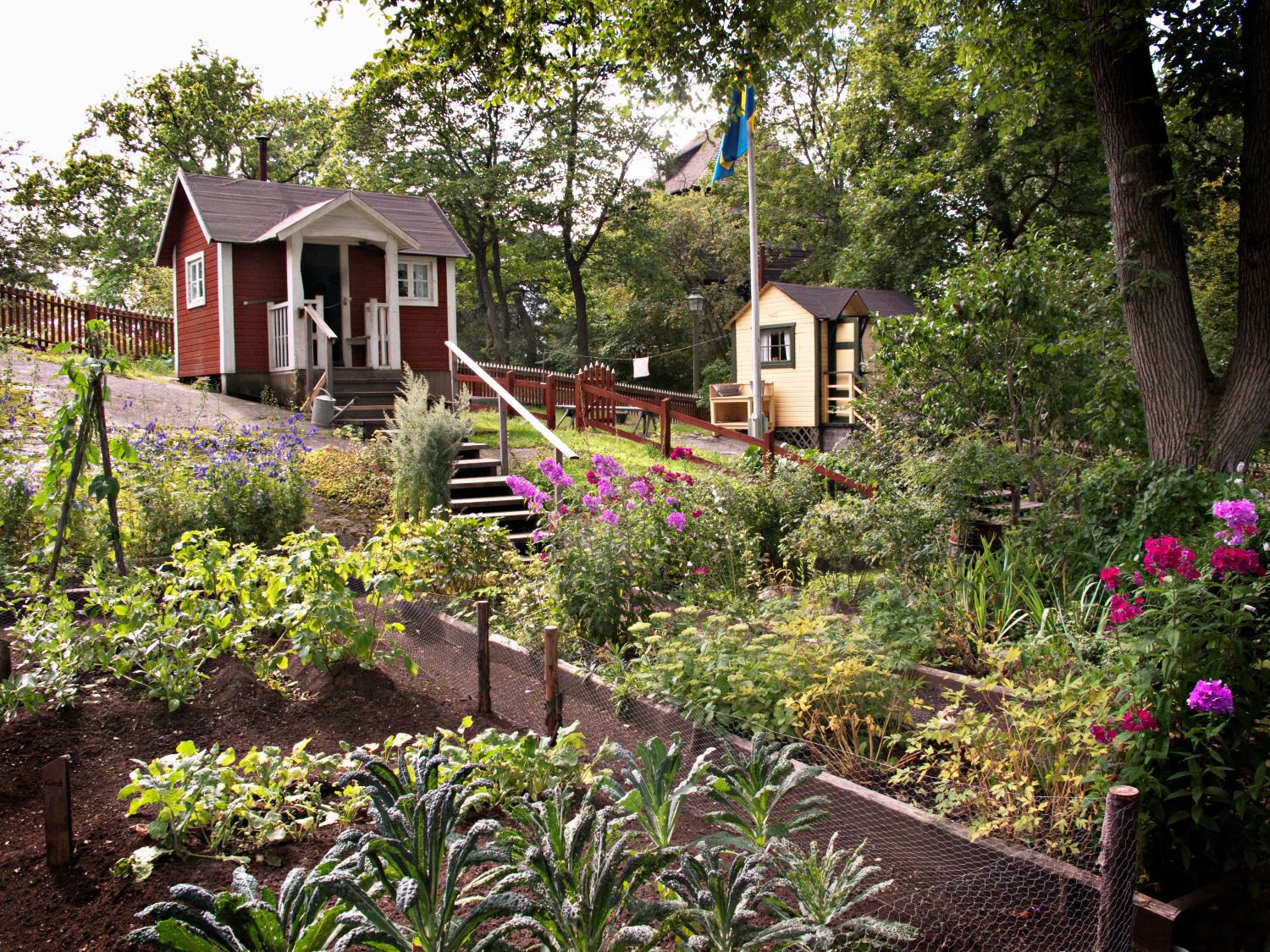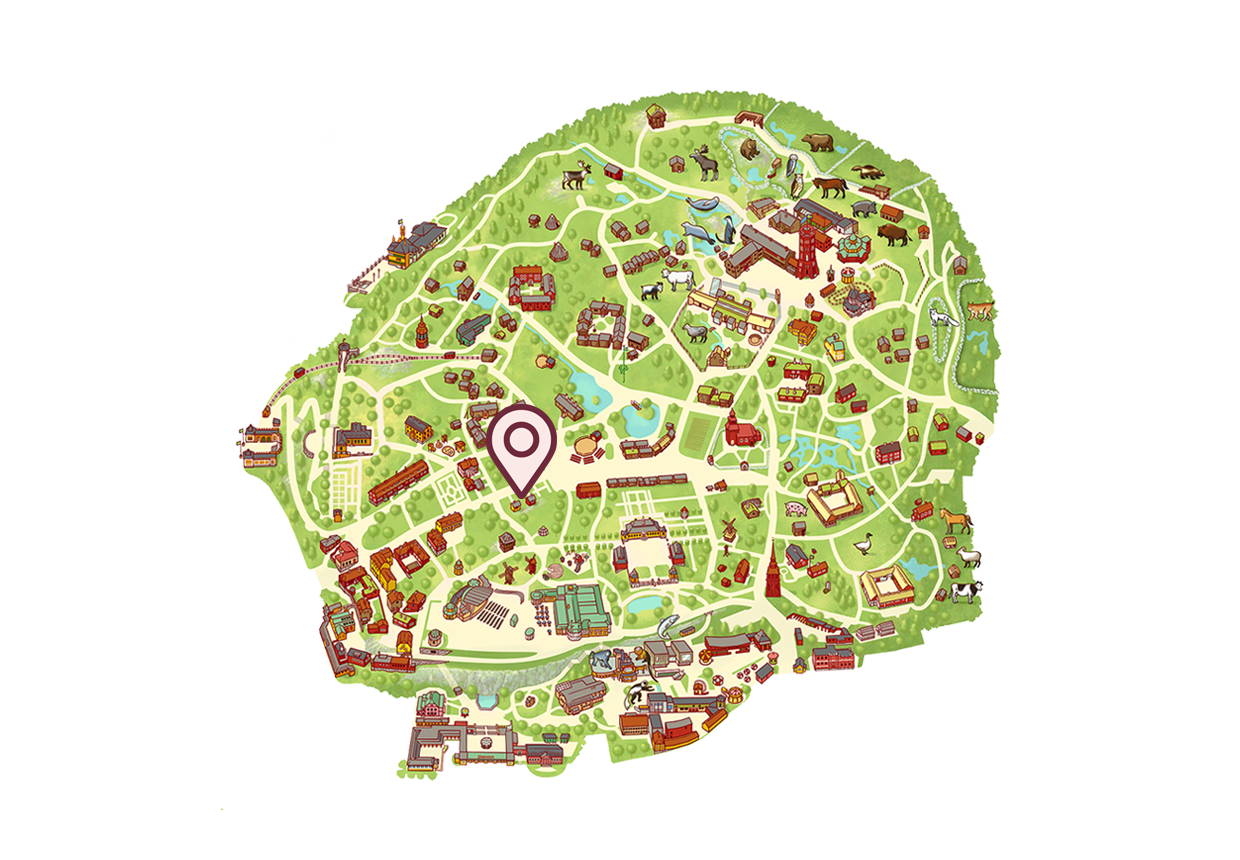- See and do
- Open air museum
- Gardens
- The Allotments
The Allotments
In the late 19th century, many rural dwellers were forced to move to the cities in order to make a living. However, wages were low and they often found themselves unable to make ends meet. Being able to grow food on an allotment meant that many people were able to put more food on the table.
-
The allotment movement came to Sweden at the turn of the last century, and has since been run in the form of associations with members who are allocated plots of land. The first Swedish allotment associations were established in Landskrona in the 1890s, based on German and Danish models, and came to Stockholm in 1906. For little outlay, city dwellers could get access to an allotment that provided both recreation and the chance to supplement their tight household budgets with homegrown fruit, potatoes and vegetables.
Skansen has two allotment gardens with cottages dating from the 1920s and the 1940s, where plants are grown in the same way as in the early twentieth century.
Life and planting at the 1920s allotments
At Skansen’s allotments with the small red summer house, we find ourselves in the 1920s. Just a few years earlier there was widespread hunger in Sweden, with potato riots in Stockholm and sky-high food prices. All the land on which edible crops can be grown has been cultivated. Up on the hilltop, there are almost no possibilities for growing crops – only a few gageas have managed to grow in the rock crevices.
Next to the veranda is a flower box with the annual trailing nasturtium, winding its way up with its green leaves and its decorative yellow, orange and red flowers.
-

The Allotments at Skansen.
-
Below the edge of the hill, next to the fence, the rudbeckia brings a splash of colour with its tall stems and its golden globes.
The growing area spreads out below the hill. Good use is made of resources through co-planting, intercropping and post-cropping; the soil is not left bare anywhere during any part of the growing season. The growing area is divided into a three-year cycle, with a third of the soil being fertilised each year and the plants being rotated according to their nutritional needs.
This avoids soil fatigue and minimises the risk of disease. The plot is divided up into a potato patch, a growing bed and a cucumber patch. The whole area is dug up in the autumn. In the spring, the beds and the land are measured with string, and the narrow 30-centimetre pathways are trodden out. The aim is to grow on as much land as possible!
Fruit, berries and vegetables
The plot has a fruit and berry border including Oranie apples, Esperence Herre pears, and Eriksdalslundens Victoria and Tanto Mindre rhubarb varieties. There is also a blackcurrant bush, a gooseberry bush, a few clumps of chives and Jerusalem artichokes. The raspberry patch with the Hornet variety forms a border with the neighbouring plot. Strawberries grow along the pathway: the Abundance variety for jam, and another variety for eating.
The early varieties Early Puritan and Early Rose are grown on the potato plot. The cucumber patch includes the Västeråsgurka variety. Broad beans, flageolet beans, radishes, daikon, cauliflowers, kale, cabbages and swedes are grown on the open ground. Carrots, sugar snap peas, green peas, red onions, beetroots, parsnips, parsley, spinach, dill, leeks, onions and celeriac grow in the growing bed.
-
Did you know that…
Both of Skansen’s allotments came from the Eriksdalslunden allotment association, located at Tantolunden on Södermalm in Stockholm, which is still active today. This was one of Stockholm’s first allotment associations, having been established in 1906.
Find The Allotments

